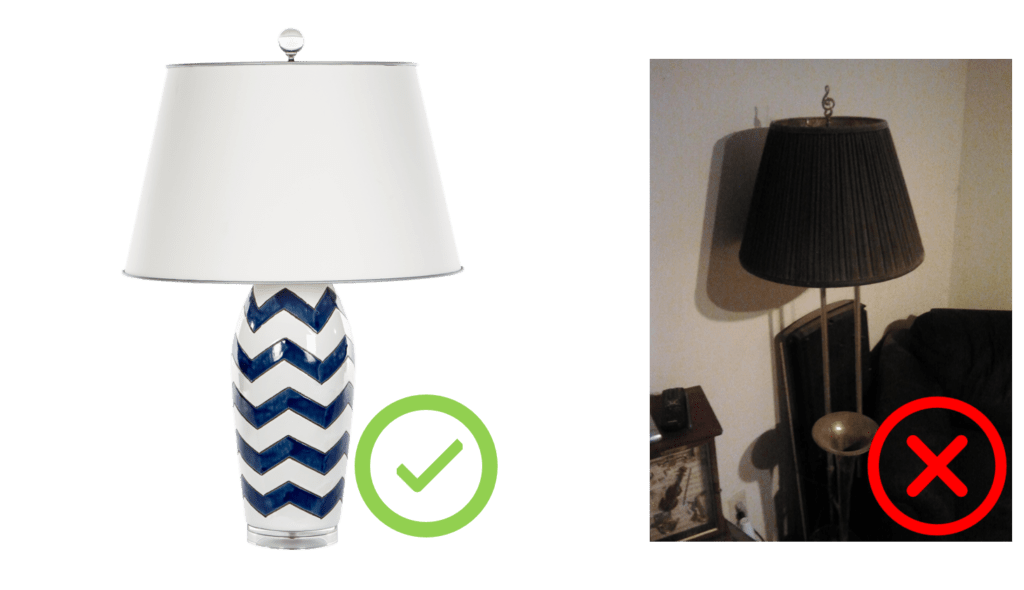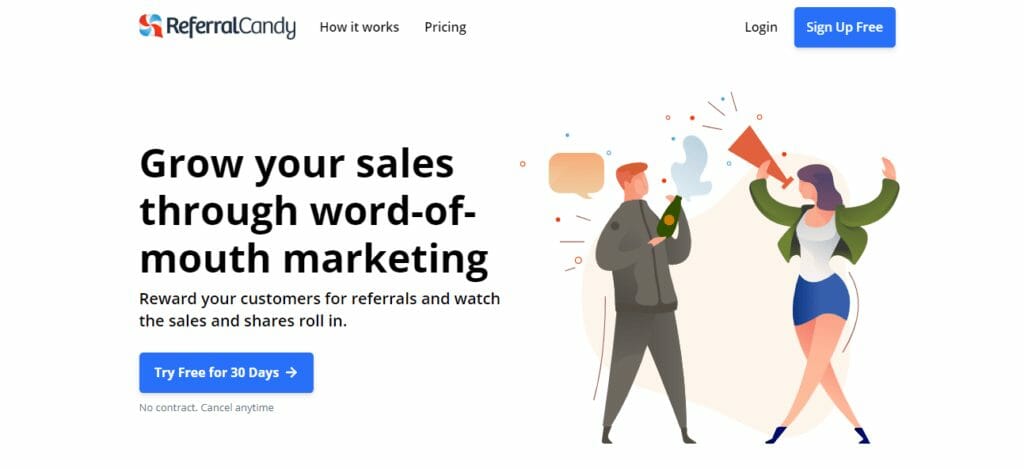Have you ever made a mistake that someone probably should have warned you about?
You’re about to step in a puddle that looks shallow, an a moment later, you’re knee deep in water and need a change of clothes.
You look up at the person standing in front of you, and they have the same telltale saturation. They just did the same thing you did. Why didn’t they stop you?
Well, if that really happened, it’s probably because that person wasn’t very kind. As productive members of society, we all have a responsibility to look out for each other.
And he same holds for business. Along my journey, I’ve been fortunate enough to learn from other people’s mistakes, and I’ve also made many of my own.
I’ve had people actively stop me from stepping in that proverbial puddle, and there have been times when I’ve sought out wisdom to help me avoid mistakes.
There’s no wrong way to do this. The important part is that you acknowledge the lessons and learn from them.
The mistakes on this list are common. Some may even seem obvious.
Read through them anyway.
With this knowledge in mind, you will be equipped to make good choices and avoid the bad ones.
I’ve broken this list of 89 eCommerce mistakes into 7 categories to make it easier to digest.
12 Core Ecommerce Mistakes
These are the mistakes you might make when the idea for your store starts taking shape. At this point, you’re making foundational decisions, and you may also be making some of these foundational eCommerce mistakes.
Choosing a trademarked business name
When you choose a business name, you have a responsibility to ensure you’re not infringing on anyone else’s trademark. And this step is about more than just avoiding shady business practices. It’ll save you a lot of time and money in the future. If you were to choose a trademarked name, you’d eventually get a cease and desist letter from the owner of that trademark. You’d be forced to stop using the name or face a lawsuit (that you’d inevitably lose).
This may sound like a simple thing, but remember that it likely means changing your domain name (which is an SEO nightmare), confusing customers with a business name change, and possibly changing product packaging and social media accounts. It’s a lot of work, and if your business is making money at the point when you make the change, it’ll surely take a hit.
For a step-by-step guide on how to search for an active trademark, read Chapter 1 of the Ultimate Step-by-Step Guide to Selling Online (it’s free). Not checking the market competition
Not checking the market competition
You may have a great idea for a business, but not all great ideas make great businesses. There’s plenty of room for you to carve out space for your unique selling proposition – but some niches are more competitive than others.
This is especially true if you’re selling a commodity product that’s readily available for dropshipping. This is something you may have to feel out a bit. But you can also use a tool like SEMRush to learn about which keywords are more competitive.

The great thing about SEM Rush specifically is that it will also recommend adjacent keywords. So even in a competitive niche, you might be able to find keywords to target.
Just be sure those keywords have commercial intent. Example: Where to buy socks = commercial intent. How to make your own socks = no commercial intent.
To start, you can take advantage of the 7-day free trial of SEMRush. It’s a valuable tool and well worth the price after the trial, but you should at least take advantage of the full 7 days with a furious level of keyword research.
Infringing on copyrights
You probably learned when you were young to treat others as you would want to be treated. So don’t use anyone’s copyrighted material without express written permission.
You could end up in a lot of hot water with expensive fines. If you need images, use a free image marketplace like Pexels or Unsplash. And if you need graphic design for social media or product images, EcommerceChamp Spicer is a quick and professional option. For more advanced graphic editing, you can use Canva.

Selecting a spammy domain name
You may have heard that it’s a good idea to get a keyword into your domain name. And while this is true, it’s not always possible. So don’t force it.
A domain like keyword4u.com has a bit of a spammy feel to it. The same is true for domains with dashes.
Spammy-looking domain names may hurt a little in SEO, but you can still succeed with them. The biggest problem is that they’re not great for the user. These names aren’t memorable and they can easily be misspelled or confused with other names.
All these reasons negate any benefits you might get from using the keyword in your domain name.
Selecting an unfamiliar niche
This mistake happens more often than you may think. Let’s say you find out that there are low competition and high-margin products to sell around the equestrian supply niche. But you’ve never owned a horse or had any interest in riding. In fact, you may even be a little scared of horses.
Can you make money in this niche? Maybe. But it’s going to be a struggle that feels like hard work every day. If you’re unfamiliar and unexcited about your chosen niche, you’ll be less likely to go the extra mile on content and marketing. It’s just not going to be how you want to spend your free time.
Failing to define a target audience
You may be surprised to learn that even seasoned business owners are guilty of this mistake. They spend a lot of time choosing the right niche and products to sell, but they stop there.
It’s not enough to have a niche and product. You need to know who is going to be interested in buying that product from you. You may sell the same product as someone else in your niche. But your business caters to a very specific market. Learn your customer and you’ll learn how to market to them effectively.
Underplaying security
When you’re dealing with customer information, you can’t be too careful. And in this age of data breaches, we all have a responsibility to keep our customers information safe.
If you choose a hosted solution like Shopify, security is covered. But if you opt for a self-hosted ecommerce provider like WooCommerce, security is your responsibility.
You’ll need an SSL certificate installed on your website to encrypt and protect customer data. Most hosts today offer a free certificate, but if you’re accepting sensitive information, consider a paid solution like Comodo.

Not defining and communicating a value proposition
If you can’t give website visitors a clear reason why they should buy from you, why would they? It’s not their fault. Figure out your company’s unique value proposition and communicate it clearly to your visitors. If they can “get it” quickly, you’ve broken down some of the barriers website visitors naturally have.
Expanding before you’re ready
You probably have big visions for where you want to take this business. But makes sure you’re making calculated decisions instead of emotional ones.
If you expand before you have the audience, you’ll only waste your efforts. Focus instead on cultivating and expanding your audience.
Running too many sales
In the early days, your Ecommerce store might feel like a ghost town. This is when it’s tempting to run sale after sale to get people buying. And there’s definitely nothing wrong with a good sale, but there is something wrong with devaluing your brand. That’s exactly what you’ll do when you run too many discounts. Over time, people view your store as a discounter – and they’ll never pay full price again. They’ll just wait around until the next sale.
If you have a unique value proposition, you can build a loyal audience for reasons other than price. These are the people who will buy from you for years.
Trying to beat Amazon at its game
It’s okay to have grandiose visions, but try to keep your feet grounded in reality. You aren’t going to “out Amazon” Amazon. It’s impossible. Amazon has spent years and billions of dollars to get to where they are, and I’m guessing that even if you have the time, you don’t have the billions.
And that’s okay.
You can build a wildly successful Ecommerce store within a small niche. Get to know your target customer, provide value and repeat. You can’t beat Amazon at its game, but you can persuade people to buy from you instead. How? By doing what Amazon cannot. Provide hyper focused information and value within your small niche. Become an expert at the thing you’re selling.
Poor customer service
Customer service always matters. But when you’re first starting out, it might be tempting to take customers for granted. Oh, I only have three customers. No big deal.
But here’s the thing.
If you’re doing this right, those three customers may become repeat buyers. And they may be loyal to your brand for years. It has to start somewhere. And you need to think of it as starting here.
Cater to your customers, regardless of how much they spend with you.
9 Ecommerce Software Mistakes
If you make the wrong choices about software, hardware or applications early on, it could spell disaster for you later. These things often become the foundation of your ecommerce business, and they can be difficult to change later. So be sure to think it all through and make sound choices upfront.
Choosing the wrong ecommerce platform
You’re actually rather fortunate to be starting your ecommerce business today. There are so many great ecommerce platforms that are feature rich and easy to use.
But there are some subtle differences between them. And some may work better for certain types of businesses than others. If you feel like you need help with this decision, read this post on how to choose the right ecommerce platform.
Hosting with the wrong company
Hosting is an element that many people take for granted. And if you’ve chosen a hosted solution, this makes sense. You don’t actually have to worry about hosting
But if you’re running on a self-hosted platform, you this is an important (make or break) decision. It’s about a lot more than just price. If you’re interested in learning more about how to choose the right hosting plan for ecommerce, you should definitely read this article.
Letting upfront expense drive long-term decisions
You don’t need a lot of money to start an ecommerce business. That’s the good news. But there are some investments that might make sense up front.
One of those expenses is education. Just like with any industry, you’ll always want to learn and grow in ecommerce. And especially in the early days, education can help you avoid costly mistakes.
Investing in education is like investing in your success.
Another area where you may want to invest is in creative content. If you aren’t the best writer, you’ll probably want to hire someone to create content for you. And you’ll find that the quality of the content will definitely vary based on the price you’re willing and able to pay.
You may also want to invest in your own product photography. This isn’t necessary, but it can give your website a major edge in branding and overall appeal.
But it can be tough to make these calls when your website isn’t earning yet.
You will need to be frugal, but be sure to weigh the potential advantages of every expense before you make a decision. Some expenses are worth it.
Keeping your software decisions static
Software and technology are ever evolving. So even though you made a decision to choose a host or ecommerce platform today, it doesn’t mean it’ll still be the best in five years. Not only does technology change, but your business does too. Don’t get locked into something just because it’s what you’ve always done.

Declining to allow guest checkout
The ecommerce platform you choose should have an option for guest checkout. If it doesn’t, it might cause you to lose sales. Not everyone wants to create an account before buying.
And you’ll walk away from those sales if you don’t give people options.
Too many steps at checkout
Have you ever gone through a checkout that has multiple steps? You have to click “Continue” about four times before you actually make your purchase.
Imagine that “Continue” button actually said, “Are you sure you really want this?” Because that’s what these steps are doing. They’re leaving room for doubt and indecision. Make sure your platform has the option for a one-page checkout process.
Omitting delivery details on product page
We’ve already covered that you can’t compete with Amazon, but we can’t deny that Amazon has trained us to expect our packages with a quickness.
At the very least, you should be transparent about when customers will get their orders. If you’re using an overseas drop shipper, there could be a long lead time. Let customers know up front to avoid customers service nightmares later.
Omitting site search or making it difficult to find
If you want people to buy from you, search must be easy. If they can’t find what they’re looking for, they’ll go elsewhere. So be sure to put the search bar in the upper right where people expect it. And try not to get too fancy with design.
Not using high-quality images
It could be a mistake to use images that are too large (we’ll cover that soon), but using small images could be an even bigger mistake.
If you land on a website and are faced with a pixelated image, you’re immediately going to bounce. If the site owners can’t get this basic tenant of online business right, how can they meet your needs?
Make sure the images are large enough to display properly on all devices and browsers. The ecommerce platform you use may offer a size suggestion. Take it.

11 Web Design Mistakes
Design can be a major part of the user experience, and if a site looks unprofessional, users aren’t going to trust it. Just think about how you’ve felt about giving your personal information on a site that appears dated. Because if they haven’t updated their design in 10 years, maybe they haven’t updated their security measures either.
Make sure you’re avoiding the following web design mistakes.
Unprofessional and untrustworthy design
If your website looks like it was put together by a 5-year-old, why would anyone want to buy from you? The same holds true if you’re using a very obviously generic template without making any modifications. Build a brand and people will be more likely to trust you.
Unresponsive design
It’s difficult to believe this in this day and age, but there are still major websites that aren’t using responsive designs. A responsive website design isn’t exactly the same thing as mobile-friendly. A mobile-friendly website isn’t always responsive, but a responsive website is always mobile-friendly.
Responsiveness refers to the design’s ability to adapt to various screen shapes and sizes. And it creates an experience that’s user friendly regardless of where or how you access the website.
This is extremely important in an age where 79% of smartphone users use their mobile device to make purchases.
No logo
In the first days of your ecommerce store, you can easily get away with using a text logo. In these moments, customers aren’t rushing the gates. In fact, you probably won’t have any visitors at all.
So a logo doesn’t have to be a major priority above setting up products or content – but it does have to be on the list.
You can use a freelance designer to get a custom logo, or you can use a service like 99Designs.
And if you want to opt for a lower-budget solution, simply start with one of the free templates on Canva to create a logo for your website. Any of these options can produce a looking logo. Just don’t leave a text logo – that doesn’t look professional.

Complex website navigation
If you want visitors to turn into customers, make the journey as easy and intuitive as possible. Do not add a fancy navigation bar. Stick with the basic left-hand or top bar navigation menu that includes your product categories. Make sure those categories are clearly defined (descriptive over creative names).
Crowded or cluttered design
When your visitors land on a page, you don’t want them to have to think about what they should do next. The answer should be obvious. If you want them to buy a product, the buy button should stand out against everything else. If you want them to choose between a few options, keep those options simple. The more people have to think, the less action they’ll take.
And that’s one reason why minimalist design is so hot in web design right now. It allows the product images and copy to shine, and it removes distractions for the user.
Failing to focus on user experience
One mistake many ecommerce store owners make is in thinking all users are like them. Remember, you’re only one user of many. Other people may browse your website differently than you do. And that means they’ll have a completely different experience along with different opinions.
Ask friends and family to take various actions on your website and report back their experience. Instruct them to be honest about any negative feedback or suggestions they may have. This isn’t about praise. It’s about improvement.
Too many popups
As a marketer, you probably love popups. They can force a user to look at your offer and take an action. But as a user, you probably don’t love them.
Still, they work. The average popup conversion rate is 3.09 percent, which isn’t half bad considering every website visitor sees the popup.
But you can have too much of a good thing. Avoid putting popups on each page or using popups that force the user to make the same decision multiple times.
In most cases, one popup per website is going to work just fine.
Forcing too many clicks for a desired action
One of the basic principles of conversion optimization is that you don’t want users to lose interest before they take action.
Let’s say the entire focus of your homepage is to collect leads. Instead of adding a button they’d have to click before they’re prompted to enter their information, add a simple form directly to the homepage. Then, it’s a one-click process.
Look at every action you want users to take and ask yourself whether it can be done in fewer clicks.
Writing large paragraphs without spacing, design elements or sub-headers
This is a common mistake people make with blogging, but it’s also a terrible web design mistake. It’s just plain bad for a number of reasons.
Whenever you’re writing web copy, keep it concise and break up large blocks. We all have short attention spans. You’re lucky if you can get all visitors to read your copy, but the likelihood drastically decreases when you have large blocks of text without sub-headers, images or appropriate spacing.
Getting stuck on design without analytics
This is a common mistake new ecommerce store owners make. They get too caught up in the emotion of the business and making things look “just right” that they ignore the data saying it doesn’t work.
Every time you change design, copy or layout, pay close attention to your Google Analytics account. If you’re noticing a drop off in actions or time on site, or you’re seeing an increase in bounce rate, the new design may not be faring well in reality. You can use a service like Optimizely to do A/B testing, which means you’ll test at least two versions of a webpage to see which is more effective. In most cases, one version is the original and the other is the new.
Depending on how much traffic your site is getting, you may notice feedback right away or it may take time.
Loading forms with too many questions
It’s tempting to want to ask everything about your website visitors. But the more fields you have in your forms, the more chances your customers have to get bored and move on.
In most cases, all you need is a first name and an email address. If you have a rewards program, you may also want a birth date. And, naturally, checkout forms will be longer.
Just stick to the basics and more people will want to fill out your forms.
Product Mistakes
Selling the wrong products
Are there really “wrong” products? Well, yes and no.
If you’re super passionate about a product and want to build your business around it, there’s a chance it’ll do well regardless of competition or margin.
But if you don’t have an undying passion for a product, try to be more scrutinizing in your approach. You’ll want to balance price points, margins and competition to find the perfect products to sell.
You’ll have to sell large volumes of lower price point items to make a decent living. Keep this in mind because that means the product will have to have mass appeal.
Do your homework by researching the competition (SEMRush can help) and evaluating margins of your products. If you’re looking for ideas on what to sell, check out Oberlo.
Choosing the wrong vendor/partner
When you’re first starting out, you might feel like a vendor is taking a chance on you. They’re the ones running a successful business and you’re the one without any sales to your name (yet). But you’ve got to shed this limiting belief – because it’s exactly what will keep you from succeeding.
Choosing the wrong partner can cause a ton of heartache in the future. If you realize a vendor doesn’t stick to their lead times or delivers inconsistent product after you’re getting substantial sales, you’ll be in a bind.
You have traffic that’s interested in these specific products but you’re left at the mercy of an unreliable vendor.
Research the reputation of each vendor before you get started, and get everything in writing.
Forgetting about your shipping costs
This is one big mistake that can cost you big. If your margins are tight, you might not be able to offer things like free shipping. And even if you do, it’s crucial that you compare shipping costs from coast to coast, so you know your true expenses.
Furthermore, if you use a drop shipping site like Oberlo, there’s a chance each item may come from a different country. In this case, do you have a way to pass the extra shipping costs on to your customers? If not, you could go out of business as quickly as you went in.
Picking up manufacturer or vendor copy (also an SEO mistake)
In almost every case, vendor copy is exceptionally uninspired. It’s very driven by product features instead of benefits, and it’s a bore to read.
If you want to wow your visitors with an exceptional experience, rewrite the copy to be more benefit-driven and interesting.
This is yet another reason why they’ll buy from you over your competitors.
Running with incomplete descriptions
Another mistake new ecommerce store owners make is running with short product descriptions that barely describe the product.
Because visitors can’t hold the item in their hands, you must make them feel like they know what it’s like to hold the product.
When you’re writing product copy, do it with the goal of answering every possible question.
Selling too many competing products
Back to the problem of choices, we don’t want to offer a dizzying array of similar products. Actually, three products that compete for your customer’s purchase are enough. You can choose a high, mid and low-priced product. But you don’t need people to choose between 5 mid-priced products. It’s decision overload. And what happens then? They’re likely to walk away without buying anything.
Not offering a large enough selection
Just like when you sell too many products, your customers may not be happy if you don’t have a large enough selection. It’s a delicate balance, and you can review customer behavior periodically to see whether you’re meeting their needs.
In this case site search is extremely valuable. If 2 percent of your visitors are searching your website for blue widgets, but you don’t sell any blue widgets, it’s time to add one to the mix.
Lack of social proof
It’s an unfortunate reality that there are unscrupulous companies out there that will scam people. How do visitors know yours isn’t one of them? One way is through social proof.
When you have a substantial audience, consider setting up a rewards program. The best social proof comes from your existing customers.
You can easily get a referral program going with a service like ReferralCandy.

Engaging in pricing wars
A pricing war is one you don’t actually want to win. If you’re going to be known as the lowest priced source out there, it’s always going to be a race to the bottom. Someone somewhere will find a way to undercut your prices, and you’ll have to go lower and lower each time.
One way around this if you offer a commodity product is to offer a price match guarantee. This way, you’re only adjusting prices on a case-by-case basis. You make no claims to have the lowest prices around, but you’ll match or beat a competitor’s price when asked. This gives the customer assurance and builds trust without a major impact on your profit.
26 SEO Mistakes
SEO Mistakes can be huge for an Ecommerce business. And because most store owners aren’t internet marketers by trade, it’s common to make mistakes in this area. Here are the most damaging ones that you should avoid at all costs.
Not starting a blog
You’ve probably heard that content is king. It’s one of the clichés of internet marketing. But a cliché is nothing more than a term that’s overused. Rest assured that this one is overused for a reason. If you do nothing else to promote your business, get in the habit of producing lots of high-quality content. Think of each page as a lure for search engine spiders. A blog offers the perfect opportunity to create lots of high quality content.
Overzealous link building
Search engines look at links from other websites as signals that your site is valuable. But there are many misconceptions about link building that could land you in hot water.
You can check out this SEO guide to learn a little bit more about building links, but if you don’t know what you’re doing, it’s best to do nothing at all.
If you end up with too many of the wrong links, you could get your site permanently banned from the search engines. And there goes all your hard work.
If you’re unsure how to build links ethically, hire an agency or just put all your efforts towards content. With lots of high-quality content, people will eventually link to your site naturally (but this takes a lot of time).
Not having an internal linking strategy
The search engines also look at the internal linking profile of your website to determine its value. For example, there’s a good chance that every page on your website links to the homepage. This is why the homepage of most websites has the most authority. But you can use this tactic with other pages too. If you have an important product or blog post, link to it from various pages.
Linking arbitrarily to the wrong pages can give search engines the wrong impression of your website. You may notice that unimportant pages are ranking higher than your moneymaking pages.
Obsessing over keyword density
Keyword density hasn’t been a reliable SEO tactic since the 90s. Search engines have become much more sophisticated and can tell what your page is about without even having the actual keyword on the page. Now, it is recommended to use the actual keyword you want to rank for, but you don’t need to target any specific density. In fact, adding keywords for the sake of having keywords can hurt your performance in search.
Not blogging consistently
You may have heard that you have to blog at least once a week to keep your website’s content fresh and new. This is good advice, but you don’t have to get tied to any set day or schedule – unless you have an engaged audience that’s awaiting your next post.
With that said, it’s always a good idea to produce new content, so get in the habit of producing a few new blog posts each month.
Avoiding a content strategy
With all this new content, you should have a plan. The goal of your content strategy should be to keep the user engaged. Ultimately, you want him or her to buy a product, but that’s not your first goal. First, you just want them to binge on your content. You want them to see your site as an authority in your niche. And once they completely trust you, they’ll buy.
Without a content strategy, you’ll probably end up with a bunch of one-off blog posts that don’t encourage interaction. Each post should move the user into your sales funnel instead of bouncing back towards your competition.
Failing to invest in link-worthy content
Not everyone is a great writer. But that shouldn’t stop you from creating link-worthy content.
Here are two content mistakes new business owners make:
- Write the content themselves even though they have no idea what they’re doing
- Use content farms to commission cheap content
In both cases, you could end up spinning your wheels. If you write content for the sake of writing content, no one is going to want to read it. Translation: It has no purpose and you just wasted your time.
If you use content farms for cheap content, there are some dangers. It’s possible to get exactly what you want, but you have to have patience and be extremely specific. You’ll also get a variety of styles and quality levels, which isn’t ideal. But the biggest danger is that the people writing for you don’t know your niche. So you’ll end up with a bunch of content that really just misses the mark. You won’t be able to fool your audience because those people are actually in-the-know.
Not promoting your content
So you spend a ton of time, energy, and maybe even money to produce great content. And then, it’s a ghost town.
In reality, if you’ve done your keyword research well (more on that here), your content may eventually start getting traffic from search engines.
But you can help that process along by promoting your content through social channels, emails and even guest blogging on other websites.
Not promoting your content is more of a missed opportunity than a mistake, but it’s still something you want to avoid.
Optimizing for the wrong keywords
If you’re in the business of selling dog leashes, the term dog leashes is your ultimate goal.
But here’s the thing.
You’re going to be up against the major players in the pet goods industry, and you’re not going to win. At least, not right away.
Start by finding keywords that are more specific and therefore easier to target. Maybe something like “dog leashes for pugs” might be a keyword you could own.
Write a few blog posts about the specific needs of pugs and how they behave on a leash (especially the need for a harness). You’ll find it’s much easier to become the authority on dog leashes for pugs than it is to become the authority on general dog leashes.
Continue doing this to get top rankings for these “long tail keywords” and your site will naturally gain authority. Once you have some authority, you can start targeting the bigger keywords.
But in the meantime, you’ll have paying customers from the traffic you’re getting.
On the contrary, if you just target the competitive keyword, you could end up spinning your wheels, producing tons of content that will never rank.
Not considering advertising
Advertising can be a great way to deliver traffic to your website, but it can also be dangerous. If you don’t have experience with ads, don’t run them.
Instead, find someone who does have experience. You can either pay an agency to manage your search marketing or you can take courses and increase your own education on the matter.
Search and social advertising are great ways to get traffic in the early days of your business – if you have the right strategy. If you don’t have the right strategy, you could end up losing money.
Jumping into advertising too quickly
When you start your first ecommerce website, you probably will get a few advertising credits. These come from your hosting company, ecommerce platform or from Google itself.
And they seem substantial.
But before you jump into advertising, know that $100 is a drop in the bucket. You can blow through that very quickly without so much as one sale.
So before you use that credit, learn everything you can about advertising strategy. And then, try to figure out what a lead or customer is worth to your business. Once you have some history, you can evaluate whether your ads were a success or failure. But this isn’t something you should jump into with a blindfold on. Doing so could cause you to lose money or put you off from advertising in general, which could be a great source of traffic when it’s done right.
Forgetting to do regular website audits (website analyzer)
The nature of the internet is pliable. You add pages to your website, make slight design tweaks, and things change.
Don’t assume that everything that worked on your page last month is still working today. The larger your business grows, the more often you should perform regular site audits to diagnose your website’s health. You can use a tool like EcommerceChamp’s Website Analyzer.
Overlooking page titles and meta descriptions
Page titles and meta descriptions aren’t the holy grail of SEO as some would have you believe, but they do have value. Don’t overlook them.
These descriptions offer another signal to reinforce what your page is about to the search engines. They also serve as an ad of sorts to entice visitors to click on your listing over a competitor’s.
Use enticing and actionable words, answer searcher’s questions and offer some level of intrigue, so they want to learn more.
Changing URLs without redirects
This is a common and devastating mistake new ecommerce owners commonly make.
A store owner learns one day that there’s a better URL structure for their website. Maybe they had been using a post-date structure on their WordPress website, and they’ve learned that post titles are better for SEO. Or maybe they heard that it’s a good practice to remove stop words and shorten URLs.
In the flip of a switch, or in more deliberate movements, they change all their existing URLs to match their newly learned logic.
But something’s wrong.
Within a period of days or weeks, the website completely drops out of search results! Were they given bad advice??
The truth is that the advice was sound. Using post titles and shortening URLs is a great strategy. But you should NEVER change existing URLs without a very good reason and some sound 301 redirecting.
Why?
Well, when you change the URL, it’s as if you’re creating a new page. You lose all the links going to the old page (without a redirect) and you could end up with broken links all over your own website. It’s bad news.
Forgetting image alt text
Image alt text isn’t going to make or break your site in SEO, but it’s an easy way to give your page an edge over another. It’s also good for user experience, which always helps with SEO.
If someone can’t view your image, they will see the alt text you’ve entered instead. Make that text descriptive and use appropriate keywords.
Paying for backlinks
This is a terrible error that could get your site banned quickly. Paying for backlinks is against Google’s policy and can get your website banned.
But there’s a reason this mistake happens so often.
We’re often told to review a competitor’s backlinks and replicate any links to your site that you can. And if there’s a big website that’s clearly paying for links, you think it’s okay. You think it’ll work for you if it’s working for them.
But here’s the problem…
Search engine algorithms are always changing. So even if they haven’t caught the site for unethical practices yet, they may in the future. That site will suffer in the search rankings and yours will go down with it for being a follower.
And there’s more…
There’s also a chance that Google has held that paid listing against the competitive site. We really have no way of knowing. But with a large site that has a broad and expansive backlink profile, a little ding here and there may not make a big impact. On your new site, that same paid link could be the kiss of death.
Don’t pay for backlinks regardless of who else is doing it.
Staying out of the SEO loop
SEO practices change at lightning-fast speed. So you’ll want to keep abreast of current best practices. We’re always posting new content here, so EcommerceChamp can be a great resource to keep you in-the-know.
But you should also know that the foundations of good SEO aren’t likely to change. So this isn’t something you need to get caught up in. Just keep an ear to the ground (i.e., keep an eye on the headlines) and you should be just fine – as long as you follow these basics and focus on user experience above all else.
When you link to pages that don’t exist, whether internally or externally, it’s a bad thing. You’re sending the message to search engines and visitors that you don’t take care of your website. You’re not paying attention to the details and you’re running a sloppy site.
Fortunately, this is an easy fix. Use a service like EcommerceChamp’s Website Analyzer periodically to check for broken links. Then you can remove the broken ones or point them to valid pages instead.
Orphaned pages
Most ecommerce platforms have advanced systems and site structures that inherently prevent you from creating orphaned pages – but it’s still possible.
A page that’s “orphaned” is not likely to show up in search results because it’s not woven into your website.
Orphaned pages are those that you cannot reach through any logical path. If you can’t follow a path from your homepage to a page on your website, that page is an orphan.
Sometimes people use orphaned pages purposely as landing pages. They don’t want traffic coming from any source other than the email or social page that’s referring people. It makes it easy to track and evaluate the performance of that page. But in most cases, orphaned pages are bad and should be avoided.
Ignoring customer questions
Customer questions are a great resource because they offer insight into your customer’s thought process. It’s not enough to answer the question to an individual. If you’re getting the same question over and over, it may be a signal that your message isn’t clear enough. Or maybe you’ve tapped into an area where you can create content to address the question for others who may not take the time to ask.

Creating generic content
You know that content is important to your company’s success, but it’s not just any old content.
When you create content that’s generic, all you’re doing is wasting your time. And at worst, you may be frustrating your audience.
Whenever you create content, think about all the questions someone may have around the subject and try to answer them. Google can help.
Google a search term and look at the “people also ask” section of the search results.
Uploading oversized images
Site speed is another factor that helps determine your placement in the search results. If all things are equal and a competitor’s site is faster, your competitor will outrank you.
So do what you can to make your site load faster. Choosing the right ecommerce platform is one thing you can do (more on that here).
Another thing you can and should do is to resize your images.
If your ecommerce platform offers a recommended image size, use it. When images are too large, your pages will take longer to load.
Set it and forget it mentality
SEO isn’t something you focus on once. It’s an ongoing process that requires your attention and focus.
Stay in the loop by subscribing to our newsletter to ensure you can get the latest tips and techniques.
Skipping FAQ page
An FAQ page is a bit like SEO gold. When you have a page that addresses all your customer’s concerns, you can instantly build trust with search engines and with your audience.
There’s a certain level of transparency that comes with a well-written FAQ page.
If you don’t have actual customer questions yet, you can use the “people also ask” section in Google search (see mistake #52) or look at competitive sites to see what their customers are asking.
Forgetting the ‘About Us’ page
Forgetting the about page is an easy mistake to make because we don’t think of this site as being about us. It’s about the customers, so that’s where we put our focus.
But the about page tells visitors a lot about your company, and it’s a great place to communicate your authenticity. And as you might have guessed, the about page serves the same purpose on search engines.
Failing to use the right header structure on all pages
All pages should follow the appropriate heading structure. And if you’re new to SEO, this may be a foreign concept to you. But don’t worry, it’s a very easy one to grasp.
The most important heading on your page (often the page title) must be in H1 brackets. These look like this: <H1>Page Title Goes Here</H1>.
The next level of headings get <H2> brackets. Any sub-headings nested into the H2 headings are H3s, and any nested into the H3s are H4s.
Here’s an example:
<H1>Page Title Goes Here</H1>
<H2>Main Topic #1</H2>
——<H3>Main topic point 1</H3>
—————<H4>Main topic point 1a </H4>
——<H3>Main topic point 2</H3>
<H2>Main Topic #2</H2>
The wrong structure confuses the search engines and possibly the readers.
10 Social Media Mistakes
Social media is more important to some businesses than others. But one thing is for certain, you can’t risk ignoring it. You also want to avoid making the following mistakes.
Focusing on too many networks
It’s tempting to want to maintain a presence on every social network out there. After all, that’s what the big guys do and you want to look like one of them.
But they have teams of people who work on social media full time. You don’t.
So instead of trying to win at everything all at once, focus on one or two networks at a time. Depending on your business, Pinterest and Youtube may be your best bets. Or it could be Instagram and Twitter.
Evaluate your competitor’s sites to see where they seem to be getting the best engagement and start there. Once you have one network running smoothly, you can branch out to others. But it’s never necessary. Remember that you’re not trying to be all things to all people.
Spending too much time networking without ROI
Many business owners have made the mistake of investing too much time building a social network on a networking site only to find that it’s not making them money.
This happened to many business owners who had cultivated a large Facebook following. Years ago, Facebook was a great resource for business owners to build and maintain a community. But Facebook has since changed their policies and it no longer makes sense for most businesses to spend any substantial amount of time trying to grow a Facebook page.
But they could have saved tons of time and energy if they were evaluating the engagement and the website traffic they were getting all along. Once things changed, they could have shifted their time and energy elsewhere.
You don’t have to get down to dollars and cents to know if something is working, either (that can be complicated with social media). But you can look at your Google Analytics account to see how much traffic is coming from each social channel. Your level of involvement should be in line with the results you’re getting. If it’s not, it’s time for a shift.
Taking a narcissistic approach to social media
Social media is meant to be a social experience. So don’t get on there and only post your own stuff.
No one wants to hear you spout off about how great you are, if you clearly don’t care about anyone else. Now, this is a tricky balance to get right, but you can start by focusing on your followers.
In the beginning, try thanking each follower personally with a customized message. You can also find ways to promote others in your industry (noncompetitors). Over time, they’re likely to return the favor – and this is how you get conversations started about your brand.
Running without research or strategy
Before you post anything, you should know two things:
- What others in your space are doing
- The message you ultimately want to convey about your brand
When you’re handling your own social media, loose guidelines are okay. You know them in your head and there shouldn’t be any confusion. But when you hire people to do social media for you, you’ll need to get more specific about your brand’s voice and message. Be clear about the types of things you will and won’t post.
Without research and strategy, you could end up in a situation that’s publicly embarrassing for you and your brand.
Ignoring negative feedback
Trolls will be trolls, but it’s important to address negative comments publicly. Because some are legitimately unsatisfied customers.
Your public response may be something as simple as, “I’m so sorry you had that experience. Please send us a direct message here {}, so we may find a way to make things right.”
Don’t get involved in public arguments and never get emotional in your response. But if you ignore negative feedback, others will notice. Unanswered complaints instantly seem extremely valid to the eyes of a new visitor. Because if the complaint wasn’t valid, why wouldn’t someone respond?
Set it and forget it mentality
It’s great to have a strategy and a content calendar where you can schedule posts in advance, but that doesn’t allow you to take a hands-off approach. On the contrary, you should be checking daily to see if anyone responded or reacted to your post.
In the worst case, your post could have inadvertently offended a large group of people. And if you don’t find out for a week, your brand could be trashed.
In the best case, people love your message and want to interact with you – but you’re not there for the conversation.
Avoid the set it and forget it mentality.
Diluting your message
Most ecommerce business owners who make this mistake do so with the best of intentions. They want to promote other people and/or show personality in their business. So they end up posting too many personal anecdotes or promoting content that’s not directly on-brand.
You really need to strike a balance here. And whenever you post something, ask yourself if it relates to your brand. If something is a stretch and you still want to post it, explain how it relates to your brand in the post. “This is a topic we discuss often and it’s dear to our hearts…”
Neglecting to respond to comments
Whether good or bad, when someone comments on a post, they’re asking for your attention. And that’s the whole reason you’re here, right? You want to give your audience attention and you want theirs in return.
When you neglect to respond to comments, you send the message that you simply don’t care. And that’s never a good thing.
Paying for attention
Advertising can be a good thing, but that’s not what we’re talking about here.
The big mistake people make with social media is when they pay for likes, subscribers, comments or the like.
There is never a case where these actions are authentic, so they’re never beneficial to you. It may look great at a glance if you have 600k followers, but if none of them are engaged, those followers are hurting your social status more than helping.
Pretending to be corporate
It’s always a good idea to look at what others are doing on social media. But you should never try to copy anyone’s account exactly. The reason you’re going to succeed is that your authentic voice and message will shine through. This is something the big companies can’t always do.
So don’t be afraid to use your authentic brand of humor or writing style if you think it suits the company. It may not be corporate, but if people want to buy from a large corporation, they will. And spoiler alert: You’re not going to trick people into thinking your site is part of a major conglomerate. May as well be authentic.
12 Email Marketing Mistakes
Email marketing may seem like a dinosaur in light of newer channels like social media, but it’s still the online marketing medium with the highest ROI. Why? Because people must sign up for your list (they’re asking to hear from you), you’re likely providing value, and email marketing is inexpensive.
But there are some BIG mistakes you can make that would make it hard for your website to recover.
Let’s explore some of those mistakes.
Sending unsolicited emails
It has never really been okay to email people who haven’t signed up for your list, but major organizations have begun cracking down on this and imposing fines. The GDPR governs how you can and cannot use email addresses and contact information of your European guests.
And even if you’re not worried about that, sending unsolicited emails can cause recipients to mark your address as SPAM, which can permanently put your emails into everyone’s junk folders and it can even have an impact on your website’s search rankings.
Mishandling the unsubscribers

According to the GDPR and general best practices, you must offer a link in each email that directs subscribers to a place where they can unsubscribe.
Any reputable mail service will have this as an automatic feature. Constant Contact and GetResponse are two great options if you’re in the market for an email client.
But it’s your responsibility to provide clear messaging on what people should expect. If it will take 24 or 48 hours for the change to take effect, make sure this is obvious. And it’s also your responsibility to makes sure the unsubscribe function is working, so you may want to do a spot check periodically.
Not testing emails on various clients (Hotmail, Gmail, etc.)
This isn’t so much of an issue with the major email services like (Constant Contact and GetResponse), but you’ll still want to do a test run by sending an email to yourself and a select group of testers. Make sure to open the email on various devices and with various browsers. This way, you’ll know it’s working everywhere. There’s nothing worse than wasting the opportunity of having someone open an email but they can’t see the content.
Creating subject lines as an afterthought
Subject lines are everything. They should be the first words you write, and you may spend up to half your time writing the subject versus the body.
Once someone clicks on the email, they’re likely to skim the content. But it’s that initial click that can be so difficult to get. So spend time crafting a thoughtful and enticing subject line that actually relates to your content in some way. Don’t worry about keywords here. They aren’t important.
Boring subject lines could cause your email open rates to plummet into oblivion.
Getting too fancy with graphic design
Sometimes, a simple text-based email is all you need. When you have lots of graphics in your emails, many servers won’t even load them automatically. Recipients will often see a prompt asking them if they want to load the images. And if your entire message is in that image, they may never see it.
There are a time and a place for graphics, but don’t get too caught up with the fancy images. They may hinder you more than help you.
Ignoring email marketing statistics
If you want to be successful in anything, you need to learn the ropes. Email marketing statistics lead us to make better decisions and product more effective email marketing campaigns.
Here are a few key statistics to consider:
- The average open rate for welcome emails is 50% — making this email a major opportunity
- The #1 reason people unsubscribe is that they’re getting too many emails
- Email conversion rates are 40x better than social media conversion rates
- DIY email list management
It’s true that you can keep a spreadsheet or another database of email subscribers on your own. But why would you?
This is the quickest and easiest way to make sloppy mistakes with your email list.
For example, if you don’t handle unsubscribers in a timely manner, you could land in hot water. But email services like Constant Contact and GetResponse provide you with so many tools and best practices to help make your emails look professional and get results.
Not only does DIY email list management add more work to your already overloaded plate, but it leaves more room for error.
Not providing value
We learned in mistake #83 that about half of people open that first welcome email.
Want to know how to get them to stop opening future emails?
Make that welcome email all about yourself.
Each and every email you send your subscribers should add some value to their lives. Maybe they learn something new or get a free gift. Maybe you share a helpful free resource or a coupon they may need. Provide value and your subscribers will start looking forward to your emails.
Sending too many emails
Getting the right balance of emails is tricky. But we do know that when people unsubscribe, it’s often because they’re getting too many of your emails.
Frequency can vary by your niche and audience but try not to email more often than once a week on a regular basis. You can increase that frequency if you’re sending a series or have a special event going on, but be sure to let subscribers know that the new frequency is a temporary thing.
Not emailing your list often enough
Ah, here lies the paradox. You can email too often, and you can not email often enough.
Here’s what you need to know…
One of the main goals of email is to remind subscribers of your existence. They may not need you right now, but they should always remember that you’re just a click away.
In most cases, emailing once a month will not be often enough. But this really depends on your business and how often customers may need your product. If it’s something they only buy once a year, you may be okay with one or two emails a month.
You never want to put people in a position where they’re wondering why they have to deal with you so often. Like, “I barely need this product once a quarter. Why am I bombarded with emails daily?”
Feel it out and analyze the results to see how things are going. If you up the frequency and people are unsubscribing more often, scale it back. If you scale it back and are taking a hit on sales, bump up your frequency just a notch.
There’s no one-sized solution for everyone, but you can find your sweet spot through logic and trial and error.
Emailing “just because”
It might be nice to get an email from an old friend “just because,” but getting a pointless email from a company is never welcome. It’s a sure way to get people to unsubscribe.
Have a purpose for every email, and make sure you’re providing some type of value to the user.
Remember that not every email should be a sales pitch. You should be using your list to gain trust and authority too.
Not writing in a consistent voice
An email from your brand should look and sound like an email from your brand
When you have multiple writers working on your emails, it can send mixed messages to the consumer. This is something that’s subtly off-putting, but it’s still off-putting. People may not be able to put their finger on the reason they don’t trust you, but it’s because you don’t have any semblance of brand identity.
As part of your content strategy, you should outline the tone and style you’ll use in all communications. Use examples to avoid confusion.
Frequently Asked Questions
Ten Ecommerce mistakes and how to avoid them-shopify?
Choosing a trademarked business name, not checking the market competition, infringing on copyrights, selecting a spammy domain name, selecting an unfamiliar niche, failing to define a target audience, underplaying security, not defining and communicating a value proposition, expanding before you’re ready, and running too many sales. Do your research to avoid them.
Ecommerce SEO mistakes and how to fix them?
Not starting a blog, overzealous link building, not having an internal linking strategy, obsessing over keyword density, not blogging consistently, avoiding a content strategy, failing to invest in link-worthy content, not promoting your content, optimizing for the wrong keywords, not considering advertising, jumping into advertising too quickly, forgetting to do regular website audits, overlooking page titles and meta descriptions, changing URLS without redirects, forgetting image alt text, paying for backlinks, staying out of the SEO loop, orphaned pages, ignoring customer questions, creating generic content, uploading oversized images, set it and forget it mentality, skipping FAQ page, forgetting the ‘About Us’ page, and failing to use the right header structure on all pages. Need to look into each avenue to see how you can ensure you aren’t making these mistakes.
What are the worst Ecommerce mistakes?
Choosing the wrong ecommerce platform, hosting with the wrong company, letting upfront expense drive long-term decisions, keeping your software decisions static, declining to allow guest checkout, too many steps at checkout, omitting delivery details on product page, omitting site search or making it difficult to find, and not using high-quality images.
What are the common Ecommerce mistakes to avoid?
Software, Design, SEO, Social Media and Email Marketing mistakes.
Conclusion
Have you been making any of these 89 ecommerce mistakes?
If you have, don’t beat yourself up. They’re all quite common.
But most of them are easy to fix – especially if you catch them in the early days of your business.
This guide can help you identify and avoid some of the common mistakes, but if you want to up your eCommerce game further, check out our Step-by-Step Guide to Selling Online and our SEO Basics Guide.
And don’t forget we are always here to help!














